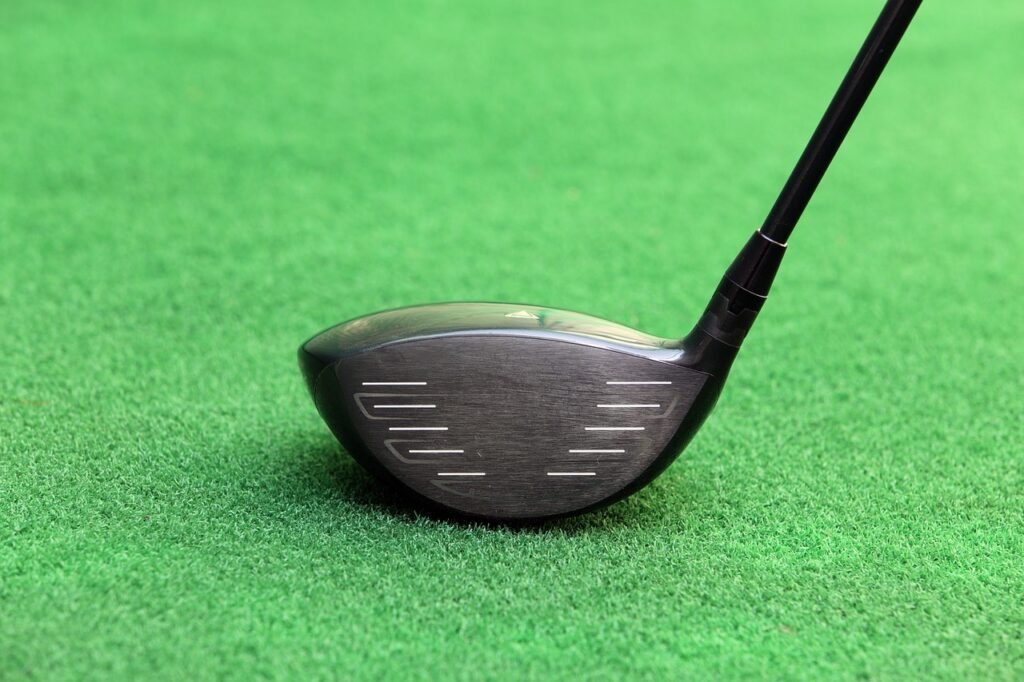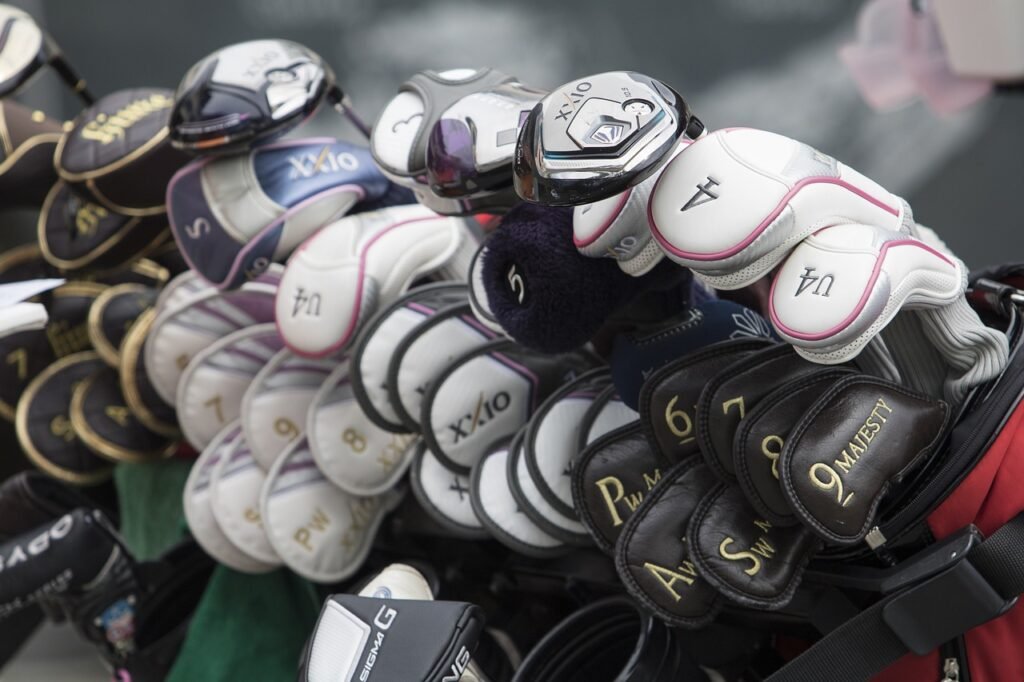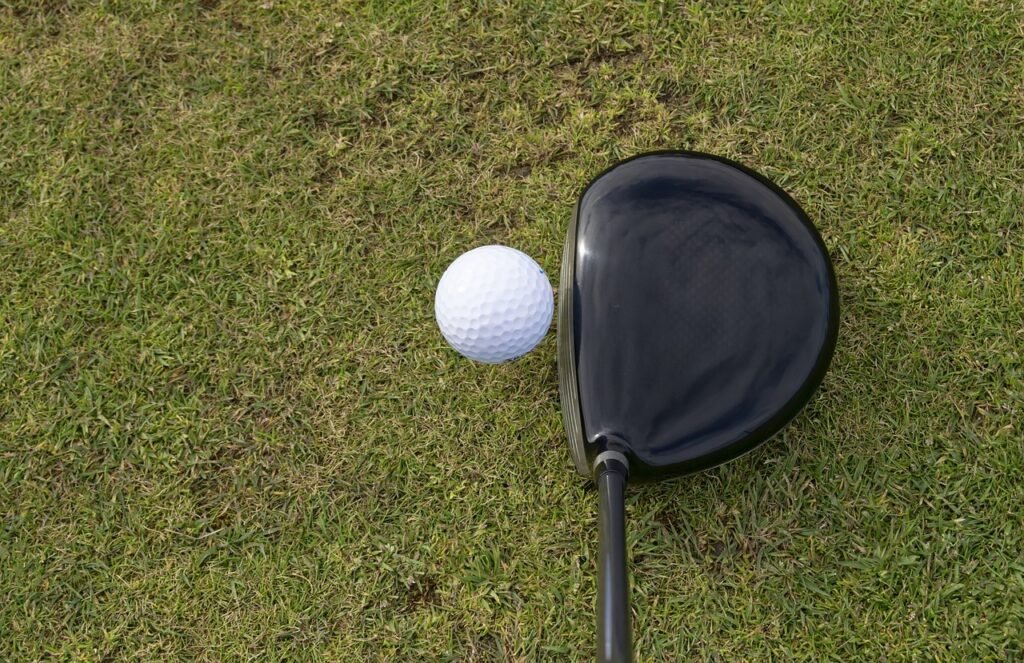Here’s an overview:
- Introduction to Golf and Equipment: Exploring the Best Brand of Golf Clubs
- The History and Evolution of Golf Club Brands
- Key Factors to Consider When Choosing Golf Clubs
- The Leading Contenders: Overview of Top Golf Brands
- Innovation and Technology: How Brands are Enhancing Performance
- From Irons to Drivers: Choosing the Right Clubs for Your Game
- Professional Endorsements: What the Pros Use
- Price vs. Quality: Balancing Budget and Performance
- Customer Reviews: Real Golfers’ Takes on the Best Brands
- The Importance of Custom Fitting in Selecting Clubs
- Sustainability in Golf: Which Brands are Going Green?
- Warranty and Customer Service: Support Beyond the Sale
- Where to Buy: Procuring the Best Deals on Golf Clubs
- Conclusion: Making an Informed Decision on Golf Club Purchase
Introduction to Golf and Equipment: Exploring the Best Brand of Golf Clubs
Golf is a sport that combines finesse, strategy, and patience, and as every golfer knows, the club is an extension of their intent on the course. Whether one’s style is all about power drives or precise putting, the right equipment can make a world of difference. Here’s a quick tour of the essential gear:
- Clubs: The trusty tools of the trade, these are split into three main categories:
- Drivers: Designed for long-distance tee shots.
- Irons: Used for a variety of shots, ranging from the teeing ground to the fairway to rough situations.
- Putters: The specialists for the green, honing in those crucial final shots.
- Balls: Although they all look similar, golf balls have varied construction designed for different levels of spin, distance, and control.
- Bags: A golfer’s caddy when no human caddy is present. It organizes clubs and accessories, and its design can even impact fatigue levels on the course.
- Gloves: They may seem minor, but a good grip can be the thin line between a slice and the perfect shot.
Now, not all golf gear is created equal. Legendary brands have built reputations on creating products that capitalize on advanced materials and innovative designs to optimize every swing, putt, and drive. When scouring for the best golf clubs, it’s important to consider one’s individual game, the technology behind the brand, and how those elements align to improve club performance.
So let’s dive into a veritable Who’s Who of top-notch brands, and uncover how the right choice in gear can level up your time on the fairway. Whether you’re a newbie or an experienced golfer looking to upgrade, knowing about the best brands for club performance will certainly put you on the course to success.
The History and Evolution of Golf Club Brands

Golf clubs have come a long way from their rudimentary origins. It all began in Scotland, the birthplace of golf, where early clubs were fashioned from wood by local craftsmen known as clubmakers. The earliest clubs had hickory shafts and heads made of tough woods like apple and pear. Fast forward to the 19th century, and we witness the emergence of professional clubmakers and the first recognized brands.
- Forging Forward in Metal: As technology advanced, so did golf club materials. The introduction of steel and later, graphite shafts revolutionized the game, adding unprecedented distance and precision.
- Iconic Brands Emerge: Spalding was one of the first American companies to make a mark in the 20th century, followed by titans like Titleist, founded in 1932, which made its name with golf balls before expanding into clubs.
- Innovation as a Constant: Brands such as Ping, known for inventing the cavity back iron, and Callaway, which changed the game with the Big Bertha driver, showed that innovation was key to brand growth.
- From Wooden to Titanium: Traditional wooden woods became obsolete as metal woods, particularly drivers, grew in popularity due to their durability and power. Titanium heads later became the norm.
- Battle for Technology: Modern brands compete fiercely through technology and endorsements, with players often associating their success with the quality of their gear.
The evolution of golf club brands reflects a history of innovation, with each era bringing its own set of advancements. From the hand-crafted tools of Scottish links to the precision-engineered equipment of today, golf club brands have continually reshaped the way golfers approach the game.
Key Factors to Consider When Choosing Golf Clubs
Selecting the right golf clubs is a bit like finding a good friend; you want reliability, a good fit, and something that brings out the best in your game. Here are some key considerations to chew over:
- Skill Level: Whether you’re a beginner, intermediate, or a seasoned pro, there’s a set of sticks made just for your level of play. Beginners should lean towards clubs that offer more forgiveness, whereas pros might opt for clubs that provide better control and feel.
- Club Components: The devil’s in the details with golf clubs. Heads, shafts, and grips all come in various materials and design, so mix and match to find your sweet spot. Drivers with large heads are forgiving, whereas smaller heads can offer more control. Graphite shafts are lighter and can help increase swing speed, while steel shafts offer precision. As for grips, it’s all about what feels good in your hands.
- Custom Fitting: Remember that story about Cinderella’s slipper? Well, golf clubs should fit just as perfectly. Custom fitting can make a world of difference to your game. Length, lie angle, and grip size tailored to your physique can vastly improve your swing.
- Set Composition: Golf sets come with different club combinations. A standard set includes drivers, irons, fairway woods, wedges, and a putter. Prioritize what you’ll actually use; no point lugging around an extra club that doesn’t see any action.
- Brand and Budget: Sure, brand names might give you street cred, but it’s all about performance that matches your budget. Do your homework and find a balance between quality and what you’re willing to spend. Remember, a pricier club won’t fix a wonky swing.
Focusing on these factors can help guide you to the right set of golf clubs to improve your game and enhance your enjoyment on the course.
The Leading Contenders: Overview of Top Golf Brands

When it comes to enhancing your game, the brand of golf clubs you choose can play a pivotal role. Some brands have earned their stripes on the greens with a reputation for quality, innovation, and performance. Among these, several stand out as the leading contenders in the golfing world.
- Titleist remains a powerhouse, celebrated for their precision-engineered clubs. Often seen in the bags of the pros, they offer a symbiosis of tradition and technology.
- Callaway is synonymous with innovation, pushing boundaries with designs like their Big Bertha drivers, which have become almost legendary.
- TaylorMade has carved out a spot at the top with their constant pursuit of the next breakthrough. Known for their drivers, they’re a favorite among players looking to maximize distance.
- PING stands out with clubs designed for reliability and consistency. They emphasize fitting, ensuring each golfer finds the perfect match for their swing.
- Cobra brings a unique flair to the game, with eye-catching designs that pack a punch performance-wise. They’re especially noted for their drivers and fairway woods.
- Mizuno may be more understated than some of their flashier counterparts but they command respect with their craftsmanship, especially in their irons, beloved for their feel.
These brands have dedicated themselves to perfecting every aspect of club performance, promising something special for every golfer, from the newcomer to the tour professional. Whether you’re refining your game or just starting out, any choice among these titans can serve as a steadfast ally on your golfing journey.
Innovation and Technology: How Brands are Enhancing Performance
The world of golf is evolving, and brands are at the forefront of this revolution. With advancements in technology, manufacturers are pushing the boundaries to enhance the performance of their clubs. By integrating state-of-the-art materials and sophisticated design techniques, these brands are delivering clubs that offer unprecedented levels of precision, distance, and control.
- Materials Matter: The hunt for the perfect club has led to the use of new alloys and composite materials. These materials, lighter and stronger than ever, increase swing speed and energy transfer, resulting in longer drives.
- Aerodynamics at Play: Aerodynamic design is not just for cars. Club heads are now designed with airflow in mind to reduce drag, allowing for swifter, cleaner swings.
- Custom Fit: Brands understand that every golfer’s swing is unique. Modern clubs can be customized to an individual’s playing style, using adjustable components to tweak the lie angle, loft, and even the weight distribution.
- Smart Clubs: The digital age has ushered in ‘smart’ clubs fitted with sensors that analyze each swing. The data gathered is used to direct practice and refine technique.
- Feedback in Real-Time: High-tech simulators and launch monitors provide instant feedback on swing path, ball speed, spin rates, and more, helping golfers understand the impact of their equipment on their game.
Brands at the cutting edge are not just selling a club; they’re providing a tailor-made golfing experience amped up by technology. Subtle innovations like enhanced grip textures or pinpoint weight placement might not scream high-tech, but they significantly influence the finesse and power a player brings to the fairway. The right pairing of innovation and technology can make all the difference, pushing past boundaries and constantly raising the bar for what’s possible on the golf course.
From Irons to Drivers: Choosing the Right Clubs for Your Game

When you step onto the green, having the right set of clubs in your bag isn’t just about brand prestige; it’s about choosing tools that complement your style and strengths. Every golfer’s arsenal starts with a solid set of irons. These are your go-to clubs for a variety of shots, especially from the fairway. When picking irons, consider the shaft material—steel is more durable and generally provides more accuracy, while graphite is lighter and can help increase swing speed.
For short-range shots, wedges are indispensable, and choosing the right ones—like a sand wedge for bunkers or a lob wedge for steep angles—can significantly lower your scores. Meanwhile, hybrids offer a blend of the iron’s control and the wood’s distance, perfect for players who struggle with long irons.
Off the tee, the driver is your best friend. When selecting a driver, look at the head size, shaft length, and loft. A larger head provides more forgiveness on off-center hits, while the right shaft length can improve control and power. Loft angles vary; a higher loft may help if you have a slower swing speed, but lower lofts can provide better players with more distance.
Lastly, don’t overlook the putter—it’s the most used club in any given round. Choose one that feels right in your hands and aligns well with your putting style. Remember, while there’s no one-size-fits-all solution, testing different clubs and consulting with a professional can ensure you make the best choice for your game.
Professional Endorsements: What the Pros Use
When it comes to professional golfers and the clubs they swing, every endorsement deals as much about personal preference as it does performance. Pros often have long-standing relationships with brands, influencing what they keep in their bags.
Take Tiger Woods, for example. The legend’s bag has been predominantly filled with Nike clubs throughout his career. Although Nike has stepped back from manufacturing golf clubs, Tiger has continued to use their equipment due to his familiarity and success with the brand.
- Rory McIlroy, another prominent figure in golf, had a notable switch from Titleist to Nike and currently plays with TaylorMade. His shift demonstrates how pros may change affiliations based on the advanced technology and customization options that newer clubs offer.
- Justin Thomas, also a TaylorMade aficionado, shows how the brand keeps top players hooked with their innovative designs and performance-focused engineering.
Additionally, golf pros look beyond the clubs to brands that provide high-quality accessories and equipment. Pros like Dustin Johnson and Jordan Spieth are often seen sporting Adidas and Under Armour apparel, respectively – brands known for their athletic performance wear.
Pro’s gear choices often set the trends in the golfing community, with amateurs and weekend golfers looking to emulate the equipment used by their favorite players. These professional endorsements signal to everyday players what brands are at the pinnacle of golfing technology and reliability. When a pro golfer commits to a brand, it’s a strong indication of the club’s potential on the course.
Price vs. Quality: Balancing Budget and Performance

When perusing the aisles for the latest golf clubs, or scrolling endlessly online, the savvy golfer knows that balance is key. They’re often caught in a tussle between the hefty price tags of top-tier brands and the tempting savings of less renowned makes. But here’s the deal: the sweet spot lies in marrying cost to quality without courting regret at the clubhouse.
- Evaluate your skill level: Are you a seasoned swinger or a green newbie? High-end clubs are crafted with features that benefit experienced players, but they may be overkill (and over budget) for novices.
- Research is your caddy: Dive into online reviews, golf forums, and professional recommendations. Often, mid-range brands offer comparable quality to premium clubs—keep an eye on those.
- Test drive: Hit up demo days or the practice range with rental clubs. Nothing beats the feel of a club in your hands. If a moderately priced set feels right, it might be your match.
- Consider longevity: Will these clubs grow with you as your skills do, or will they soon be overshadowed by your improving technique? Opt for clubs that offer a long game.
- Don’t overlook pre-owned: Gently used clubs from respected brands can be gems—especially after a good tune-up.
A modest budget doesn’t mean one has to sacrifice performance. Golfers can find that middle ground where affordability meets functionality, ensuring that each swing, drive, or putt doesn’t break the bank—or their spirit on the course. Keep in mind, however, that while price can often reflect quality, it doesn’t dictate your performance. Sometimes, the best club in the bag is the one that feels right, regardless of the logo stamped on it.
Customer Reviews: Real Golfers’ Takes on the Best Brands
For those looking to upgrade their golf clubs, the opinions of fellow enthusiasts can be incredibly telling. Dive into the clubhouse chatter and you’ll unearth genuine testimonials about the top brands in golf gear.
- Titleist: Seen as the crème de la crème for serious golfers, Titleist earns high marks for quality and consistency. “You just can’t beat the feel of a Titleist iron in your hands,” shares Mike, a single-digit handicap golfer from Arizona.
- TaylorMade: Popular among young guns on the course, TaylorMade is lauded for its innovative technology. “The M series drivers have given me at least 20 more yards off the tee,” boasts Sarah, an avid weekend golfer.
- Callaway: This brand is often praised for its user-friendly designs. “The Big Bertha has been a game-changer for my mid-range shots,” notes John, a golf enthusiast aiming to break 80.
- Ping: With a reputation for precision, Ping attracts players like Linda who says, “My G400 irons have improved my shot accuracy incredibly. It’s like they’ve got a built-in navigator!”
- Cobra: Known for making waves with colorful designs, Cobra also earns respect for performance, with Dave, a senior player, commenting, “The F9 Speedback driver is the best thing that ever happened to my golf bag.”
Real-world feedback like this provides invaluable insight into how each brand holds up under actual playing conditions. Whether it’s the distance a TaylorMade driver affords or the control a set of Titleist irons provides, it’s the honest opinions of fellow golfers that often weigh heaviest when one is contemplating which clubs will give them the edge on the green.
The Importance of Custom Fitting in Selecting Clubs

When it comes to elevating one’s game, the value of custom fitting cannot be overemphasized. Imagine slipping into a suit that’s tailored just for you, versus one that’s off the rack. That’s the difference custom fitting makes in the world of golf—it’s about crafting the perfect extension of your body.
To optimize a golfer’s swing, clubs must complement their unique size, shape, and swing style. Here’s why custom fitting is the ace in the hole for any golfer eyeing the leaderboards:
- Better Accuracy and Performance: Custom fitted clubs are tailored to an individual’s stance and swing path. With clubs that have the correct lie angle, length, and grip size, you can hit the ball in the sweet spot more consistently, improving your accuracy and distance.
- Enhanced Comfort: A golfer is less prone to adjusting their natural stance and swing to accommodate ill-fitting clubs. This not only makes the game more enjoyable but also reduces the risk of injury due to unnatural adjustments or overcompensation.
- Increased Confidence: Stepping onto the course with clubs that feel like they were made for you can provide a psychological boost. Knowing your equipment complements your game can increase confidence, which is often reflected in performance.
- Customization for Conditions: Beyond physical attributes, custom clubs can be tailored for the conditions you frequently play in—such as adjustments for windy climates or a specific type of turf.
While brand reputation and technological advancements in clubs are significant, they can only shine when the fit is right. Leading brands like Titleist, Callaway, and TaylorMade offer extensive custom fitting options to ensure that players can extract the maximum benefit from their innovative designs. So before you splurge on the sleekest set off the shelf, remember that the true secret weapon to improving your game could be a custom fitting session.
Sustainability in Golf: Which Brands are Going Green?
Golf has been stepping up its game in the arena of environmental responsibility. A number of brands have teed-off initiatives aimed at reducing their carbon footprint and promoting sustainability. Let’s take a swing at some of the green leaders in the clubhouse.
- TaylorMade has been making strides by incorporating recycled materials into their products and packaging. They’re also reducing waste through a product take-back program, giving old golf balls and clubs a second shot at life.
- Callaway Golf has put sustainability at the forefront of its operation by launching Chrome Soft Truvis golf balls made with graphene, a material that’s not only durable but also helps conserve resources over time. They’re also investing in energy-efficient manufacturing processes.
- Titleist, known for their Pro V1 and Pro V1x balls, is driving toward sustainability by optimizing their manufacturing process to reduce waste and water usage. Plus, they’re looking into using more sustainable materials for their balls and packaging.
- PING is addressing the green scene head-on by initiating a program to recycle clubs and utilizing solar power at their Phoenix facility. They’re reducing their slice of resources and doing their part to keep their operations eco-friendly.
- Adidas Golf isn’t staying on the fringe either. Their commitment to sustainability is evident in their use of recycled materials to create high-performance golf shoes and apparel.
Each of these brands is contributing to a more sustainable game, showing that when it comes to golf, being eco-conscious is now par for the course. Whether it’s through recycling, energy conservation, or material innovation, these brands are sure to keep golfers—and the planet—in the swing of things.
Warranty and Customer Service: Support Beyond the Sale

When investing in high-quality golf clubs, the caliber of post-purchase support can be as critical as the performance of the clubs themselves. The leading brands in golf equipment understand this and demonstrate their commitment through solid warranty terms and customer service reputations.
- Warranty Coverage: Most top golf brands offer warranties that cover manufacturing defects and workmanship issues for a period that typically ranges from one to two years. It’s always wise for golfers to review the warranty specifics, as they can vary widely from brand to brand. Some may even provide lifetime warranties on certain club components.
- Customer Service Excellence: The responsiveness and helpfulness of customer service teams are where brands can truly shine. Golfers should look for brands that are easily reachable through multiple channels, whether it’s via phone, email, or live chat. Exceptional brands often offer personalized services like fitting advice and maintenance tips to help golfers get the most out of their purchase.
- Post-Purchase Support: In addition to handling warranty claims, the best brands often provide services such as re-gripping, re-shafting, and club customization post-purchase. This level of support ensures that your clubs remain in top shape throughout their lifespan and your game stays sharp.
- Return Policies: Understanding a brand’s return policy is crucial. The most consumer-friendly brands offer no-hassle returns within a specified period. This offers peace of mind, especially when purchasing clubs online without trying them out first.
- Customer Feedback: Finally, a brand’s attention to customer feedback and their willingness to act on it can be a strong indicator of how much they value their customers’ experiences.
Remember, a company’s support after the sale can dramatically impact your overall satisfaction with your golf clubs. So, before sealing the deal on your next set, consider not just the performance, but also the warranty and customer service promises that come along with your clubs.
Where to Buy: Procuring the Best Deals on Golf Clubs
Buying the right golf clubs can be as important as mastering the swing. Whether it’s the latest models or tried-and-true classics, there are several hotspots for snagging those sweet deals.
- Online Retailers: Start with online golf specialty stores. Websites like Golf Galaxy and TGW often run online specials, clearance sales, and offer a wide selection of brands. Plus, they often have user reviews, which can be helpful.
- Direct from Manufacturers: Buying directly from brands like Callaway, Titleist, or TaylorMade can sometimes get you a custom fit or exclusive models not available elsewhere.
- Sporting Goods Stores: Chains like Dick’s Sporting Goods or Sports Authority provide the chance to physically handle clubs and sometimes they offer swing analysis services.
- Pro Shops: Local golf course pro shops not only sell clubs but provide localized advice and may have deals for club members.
- Second-Hand Sporting Stores: Stores like Play It Again Sports sell used clubs at lower prices, perfect for golfers on a budget or those looking to try the sport without a huge investment.
- Online Marketplaces: Websites like eBay or Facebook Marketplace can be a goldmine for gently used clubs at a fraction of the cost.
It’s important to note sales events like Black Friday or end-of-season clearance, as they are prime times to purchase golf clubs at a discount. Frequenting forums and signing up for newsletters can also alert golfers to flash sales and promotions. Remember, the best deal isn’t just about price, it’s about finding the perfect fit for one’s personal game.
Conclusion: Making an Informed Decision on Golf Club Purchase

When the time comes to purchase golf clubs, making an informed decision is fundamental to enhancing your game. It’s essential to evaluate the key elements that align with your skill level, playing style, and budget. Keep these final thoughts in mind:
- Research is paramount: Delve into reviews and test out different brands to find the right fit for your swing.
- Fitting is crucial: A professional fitting can greatly improve your game. Custom clubs tailored to your specifications can make a significant difference.
- Consider your budget: Higher prices don’t always guarantee better performance. Weigh cost against benefits.
- The right brand matters: Look for brands with a solid reputation for quality and innovation. Remember, what works for pros may not suit amateurs.
- Future-proof your investment: Think about how clubs can grow with you as your skills develop. Buying clubs that can be adjusted or that you won’t outgrow too quickly is wise.
Going the extra mile to ensure you’re well-informed will pay dividends on the course. After all, your clubs are your tools of the trade, and the right set can bolster your confidence and potentially lower your scores. Now, with the insights from this guide in your golf bag, you’re ready to hit the pro shop and find that perfect set of clubs that feels like it’s made just for you. Swing easy!
Looking for the best brand of golf clubs? While the ideal brand can vary based on your specific needs and budget, our recommended article on affordable golf clubs provides great insights into which brands offer the best value for money. It highlights quality options that balance cost and performance, perfect for both new and seasoned golfers. For detailed recommendations on the best affordable golf club brands, check out Best Affordable Golf Clubs.
